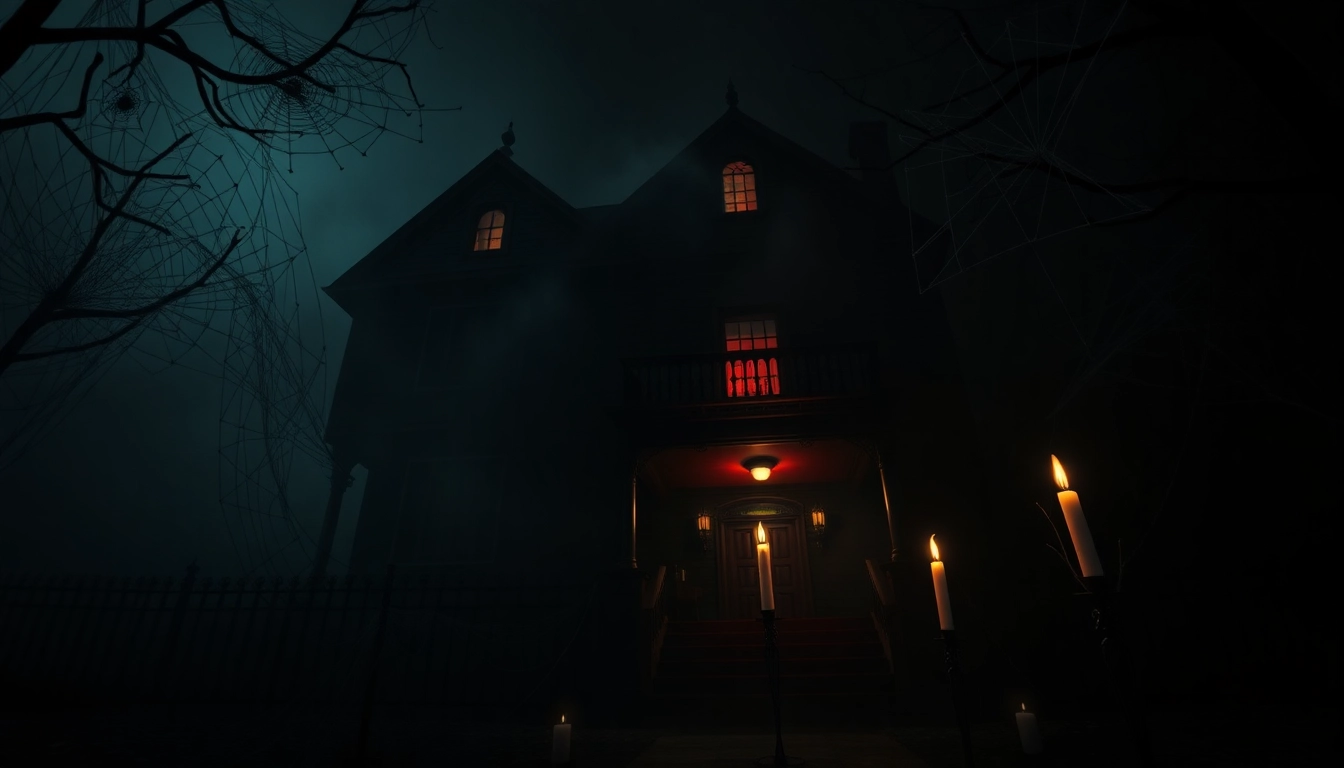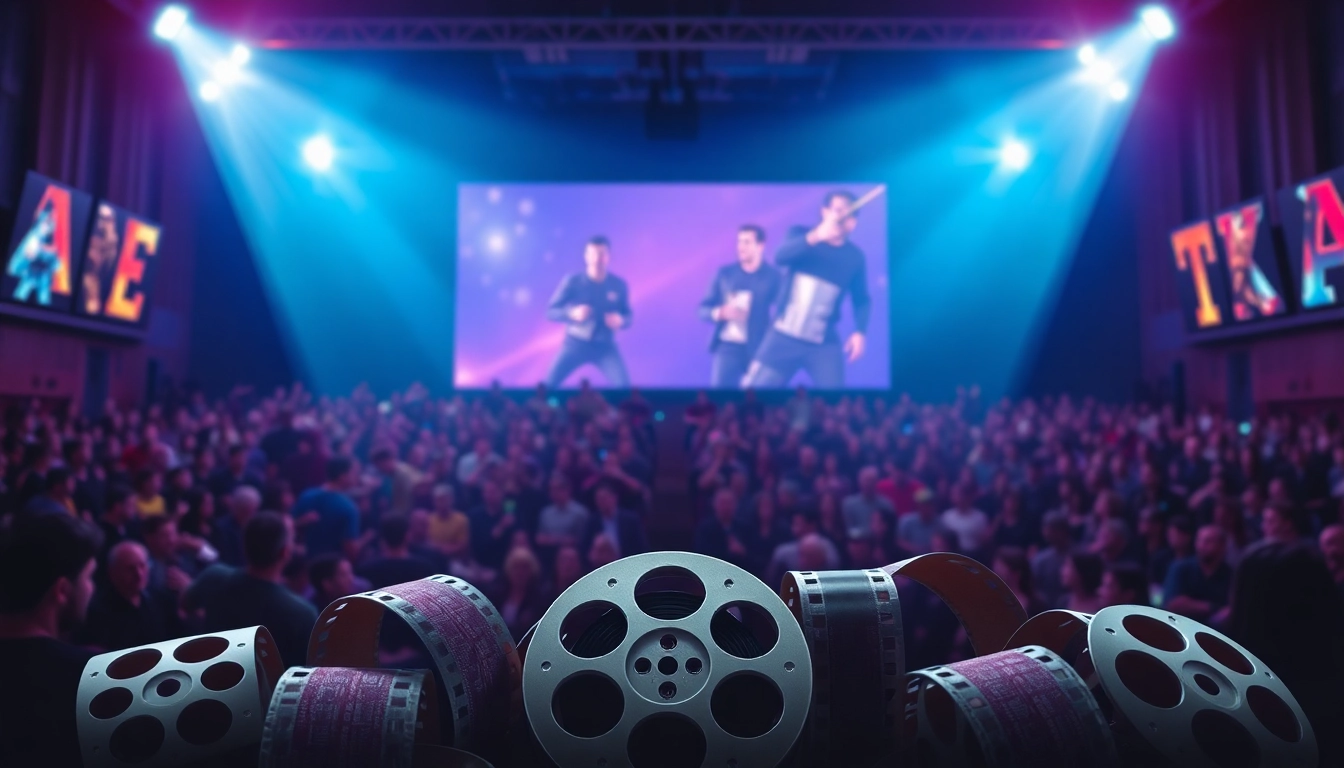1. The Evolution of Horror Cinema
1.1. A Brief History of Horror Films
Horror films have been captivating audiences since the early days of cinema. The genre began gaining popularity in the late 19th century, with films like The Haunted Castle (1896) and Dr. Jekyll and Mr. Hyde (1920) paving the way for horror as a significant cinematic genre. The 1930s saw the emergence of iconic monsters with Universal Pictures’ horror classics, such as Frankenstein, The Mummy, and Dracula. These films not only terrified audiences but also established tropes that would become staples in horror cinema.
As the decades progressed, horror continued to evolve. The 1960s and 1970s brought about an era of psychological horror, characterized by films like Psycho (1960) and The Exorcist (1973). This period was marked by more complex themes and a focus on character development, moving away from mere shocking visuals. By the 1980s, slasher films such as Halloween (1978) and A Nightmare on Elm Street (1984) dominated the landscape, capitalizing on the fear of vulnerability through the portrayal of relatable characters facing improbable horrors.
Today, horror has branched into various sub-genres, showcasing stories that reflect societal fears and personal anxieties. With the rise of digital technology, filmmakers can now create more immersive and impactful stories that resonate with contemporary audiences.
1.2. Key Horror Movie Genres
Horror cinema is far from monolithic; it encompasses various genres and sub-genres that offer different experiences to audiences. Understanding these genres helps viewers identify their preferences and find the right films. Here are some key horror movie genres:
- Psychological Horror: This genre focuses on the mental and emotional state of characters, often blurring the lines between reality and imagination. Films like Black Swan (2010) exemplify this approach, exploring themes of identity and paranoia.
- Supernatural Horror: Featuring elements beyond human understanding, supernatural horror often includes ghosts, demons, and other entities. This genre is well represented by films such as The Conjuring (2013) and Insidious (2010).
- Slasher Horror: Characterized by a killer who targets unsuspecting victims, slasher films like Friday the 13th (1980) and Scream (1996) create suspense through the cat-and-mouse dynamics between the murderer and their prey.
- Found Footage: This genre presents stories through footage supposedly captured by the characters themselves, creating an unsettling realism. Movies like The Blair Witch Project (1999) and Paranormal Activity (2007) have popularized this format.
- Body Horror: Focusing on graphic depictions of physical transformation or mutilation, body horror films like The Fly (1986) explore themes of identity and existential dread.
1.3. The Impact of Technology on Horror
Technology has had a profound impact on the evolution of horror films. From the introduction of sound in cinema, which added an additional layer of suspense, to modern CGI effects that allow filmmakers to create terrifying creatures that were once thought impossible, technology continues to elevate the genre.
The advent of streaming platforms has also shifted how audiences consume horror. With services like HellHorror.com providing access to an extensive library of horror films, audiences can explore both classic titles and newer releases from the comfort of their homes. This accessibility fosters a more diverse viewership, allowing independent filmmakers to reach audiences that traditional distribution models may have overlooked.
2. Latest Trends in Horror Movies on HellHorror.com
2.1. New Releases and Upcoming Films
The horror landscape is ever-changing, with a continuous influx of new releases and upcoming films that keep fans on the edge of their seats. This year, several anticipated titles are set to make waves in the genre.
For instance, films that blend horror with comedy, such as Freaky (2020) and the upcoming Renfield (2023), showcase a trend of hybrid genres that appeal to wider audiences. Moreover, remakes and sequels of classic horror films continue to draw interest, as seen in Scream VI (2023) and Halloween Ends (2022). These films often evoke nostalgia while providing fresh perspectives on beloved stories.
2.2. Streaming Platforms and Where to Watch
The growth of streaming platforms has revolutionized how horror films are distributed and consumed. Services like Netflix, Hulu, and Amazon Prime Video now feature extensive horror libraries, catering to diverse tastes and preferences. Moreover, platforms dedicated exclusively to horror, such as Shudder, have emerged, providing a treasure trove of horror classics, indie films, and original content.
HellHorror.com keeps its audience informed about where to stream the latest films and series, ensuring that no horror aficionado misses out on the latest chilling offerings. The accessibility provided by these platforms helps cultivate a vibrant community of horror fans eager to explore new and exciting narratives.
2.3. Fan Favorites and Hidden Gems
While major releases often dominate the conversation, there are countless fan-favorite horror films and hidden gems worth exploring. Independent films such as Hereditary (2018) and The Babadook (2014) have garnered critical acclaim while capturing the attention of horror enthusiasts. These films often take innovative approaches to storytelling, providing fresh ideas that challenge genre conventions.
Moreover, regional horror films from international filmmakers often provide unique cultural perspectives that enrich the horror genre. Films like Train to Busan (2016) from South Korea and Tiger’s Are Not Afraid (2017) from Mexico showcase the global appeal of horror while revealing different societal fears and narratives.
3. Engaging the Horror Community
3.1. Non-Traditional Horror Events and Conventions
The horror community is vibrant and diverse, with events and conventions that allow fans to gather and celebrate their love for the genre. Beyond typical film festivals, events like horror-themed art exhibitions, immersive escape rooms, and horror trivia nights have gained popularity in recent years.
Conventions such as Comic-Con and the Horror Writers Association events provide platforms for filmmakers, writers, and fans to connect, share ideas, and discover new projects. HellHorror.com offers insights into these events, helping fans stay up-to-date on the best opportunities to engage with the community.
3.2. Social Media’s Role in Horror Fandom
Social media platforms have transformed how horror fans interact with one another. Groups dedicated to discussions about horror films, creation, and fandom have flourished across platforms such as Facebook, Twitter, and Instagram. These communities create spaces for discussions and reviews, fostering collaboration and engagement amongst fans and creators alike.
Utilizing hashtags like #HorrorCommunity and #HorrorMovies, enthusiasts can share recommendations and discover hidden gems even faster than ever. This connectivity enhances the overall experience for fans, who can celebrate their passion for horror together.
3.3. Collaborations with Indie Filmmakers on HellHorror.com
As the indie horror scene thrives, HellHorror.com plays a significant role in promoting lesser-known filmmakers and their works. By spotlighting indie projects and collaborations, the platform encourages creativity within the genre and highlights innovative storytelling that often goes underappreciated.
Independent filmmakers bring fresh ideas and diverse perspectives, expanding the boundaries of the horror genre. Support for these creators through reviews, interviews, and promotions fosters a sense of community and inspires new talent to emerge in the industry, ensuring that horror remains a dynamic and evolving genre.
4. The Psychology Behind Horror Films
4.1. Why We Love to Be Scared
The appeal of horror films lies deeply within human psychology. The thrill of being scared provides a unique combination of excitement, adrenaline, and catharsis. As viewers, we experience a safe form of danger that allows us to confront our fears from a distance. This phenomenon, often referred to as “benign masochism,” suggests that audiences actively seek experiences that evoke fear while remaining in control of their safety.
Horror films provide an outlet for exploration of our darkest fears, allowing us to confront emotions like fear, anxiety, and isolation. By engaging with these themes in a controlled environment, viewers can process complex feelings and emerge with a sense of relief or empowerment.
4.2. Horror as a Reflection of Society
Horror films often serve as mirrors to societal anxieties, reflecting the fears and issues that plague cultures at various points in time. From the classic tales of monsters representing societal outcasts to modern horror films that address topics like surveillance, identity, and climate change, the genre adapts to speak to contemporary issues.
For instance, films like Get Out (2017) delve into racial tensions, while It Follows (2014) explores themes of sexual anxiety. By weaving social commentary into narratives, horror filmmakers provide a platform to address real-world issues and provoke thought within audiences, inspiring discussions long after the credits roll.
4.3. Exploring Horror Tropes and Their Meaning
Horror films often rely on established tropes that evoke fear and tension. From the “final girl” archetype to the “creepy doll” trope, these conventions shape audience expectations. Analyzing these tropes can reveal deeper meanings and cultural implications.
The “final girl,” for example, often represents resilience and survival against overwhelming odds, while tropes like “the haunted house” serve as metaphors for psychological trauma and unresolved issues. Understanding these tropes invites viewers to engage with films on a deeper level, prompting discussions about the broader implications of horror narratives.
5. Maximizing Your Horror Experience
5.1. Tips for Watching Horror Movies
To fully enjoy the horror genre, consider the following tips that can enhance your viewing experience:
- Choose the Right Setting: Create an immersive environment by watching in a dark room with minimal distractions. This helps heighten suspense and allows you to focus on the film.
- Watch with Friends: Sharing the experience with friends can amplify emotions, making the film more enjoyable and providing opportunities for discussion afterward.
- Balance the Genres: Mix lighter films with heavier horror to avoid burnout. Incorporating comedy or other genres can help maintain excitement without feeling overwhelmed.
5.2. Recommended Horror Movie Lists from HellHorror.com
HellHorror.com compiles numerous recommended lists that cater to various tastes, from classic horror masterpieces to contemporary gems. Browsing curated selections allows fans to discover must-see titles while ensuring they experience a diverse array of horror narratives.
Some notable lists include:
- The Best Horror Movies of All Time
- Top Indie Horror Films You Shouldn’t Miss
- Best International Horror Releases
5.3. Future Predictions for the Horror Genre
As we continue into the 2020s, we can predict several trends that could shape the horror genre:
- Increased Representation: With growing awareness of diversity in storytelling, expect to see more films that explore different cultural perspectives and narratives.
- New Technologies: Advancements in virtual reality (VR) and augmented reality (AR) may offer audiences immersive experiences that push the boundaries of conventional horror films.
- Environmental Horror: As climate change becomes a pressing issue, stories that delve into ecological horrors may become more prevalent, reflecting societal anxieties about the future.



